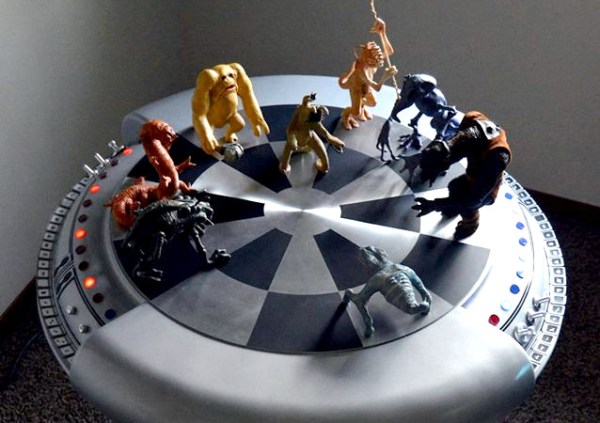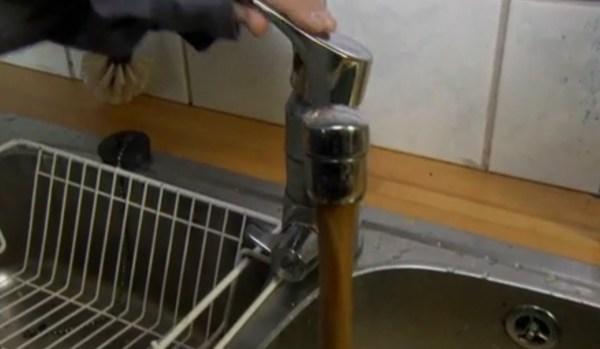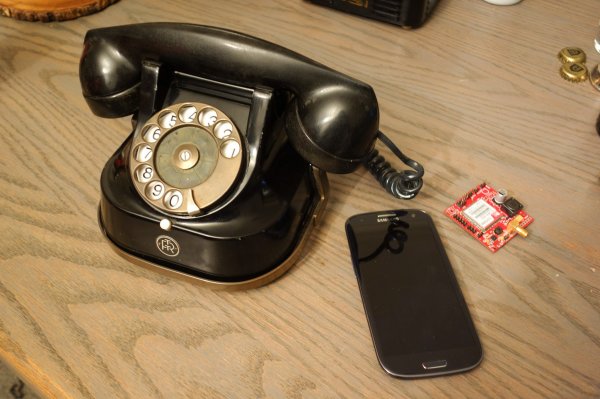The quality and attention to detail seen in [Ian Martin]’s build is impressive regardless of his choice to build a functioning holochess set. We’re not to take away from the nerd-gasm this build invokes, but we’d rather draw to attention the craftsmanship of the builder. Sadly [Ian] doesn’t have a proper blog or product page but you can view everything he posts about the project on his social networking page and get his take on the finished work in the video below.
This build is not just a well engineered mechanical design, the electronics that run the controls and indicators are [Ian]’s home brew Arduino Mega shields. A complete game requires two sets of electronics, one for each side of the table so rolling his own shield was probably a space saving decision.
Each of the figures used as game pieces were hand sculpted and painted (is that a Rancor to the right?). User controls are presented in true-to-form fashion with 54 buttons, 26 lights, 10 knobs, and an LCD screen with custom bezel to display custom monster status. Nope, the monsters aren’t animated holograms but to make up for that [Ian] built in ambient noises so you know which are still alive. This is our first time discovering that there is a name other than “Holochess” for the game: Dejarik. We’ll leave it up to the reader to figure out how it’s played.
This is an impressive build and we can’t wait to see what else [Ian] comes up with in the future. We have covered Star Wars builds before and some interesting board game builds but never where the two meet before this.



 Wanting to send a message to at least a few people in China, the members of the hackerspace had to think laterally. Metalab member [amir] came up with a way to encode data that could be printed on t-shirts. These bright, colorful squares featured in all of the interviews with Metalab members carried messages like, “free tibet!”, “remember tian’anmen 1989” and “question the government. dont trust the propaganda”
Wanting to send a message to at least a few people in China, the members of the hackerspace had to think laterally. Metalab member [amir] came up with a way to encode data that could be printed on t-shirts. These bright, colorful squares featured in all of the interviews with Metalab members carried messages like, “free tibet!”, “remember tian’anmen 1989” and “question the government. dont trust the propaganda”













